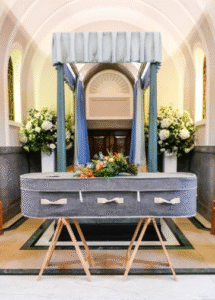Topic
Injury? Know Your Rights: A Clear Guide to Personal Injury Claims

Key Takeaways
- Grasping the foundational principles of personal injury law.
- Understanding the variety and specifics of personal injury case types.
- Comprehending the steps to take immediately after an injury for a successful claim.
- Appreciating the role legal professionals play in navigating personal injury cases.
- Learning about compensation and how it is determined in personal injury cases.
The realm of personal injury law exists to provide respite to individuals who suffer harm due to negligence. Faced with unexpected injuries, many find themselves in unfamiliar territory fraught with legal complexities. Yet, understanding this process is essential for those seeking justice and compensation. In situations where an accident causes injury, having a lawyer specializing in this law area can be highly beneficial. They are skilled at handling the unique complexities in these cases and work tirelessly to defend the injured party’s rights.
Introduction to Personal Injury Law
Personal injury law deals with legal issues and defenses in civil lawsuits due to wrongful conduct. Such lawsuits involve harm resulting from negligence, intentional misconduct, or strict liability. Attorneys who focus on accident injury claims defend those hurt due to other people’s carelessness. They support clients in navigating the convoluted legal process to recover costs associated with medical care, missed wages, and suffering. Accident injury lawyers are a valuable resource for anyone seeking justice and a fair settlement for injuries resulting from car accidents or slip-and-fall accidents.
Types of Personal Injury Cases
There exist various categories of personal injury cases, a lot of them involving damage caused by the negligence or misconduct of another individual. Common types include motor vehicle accidents, where drivers, passengers, or pedestrians sustain injuries due to collisions or reckless driving. Slip and fall cases arise when individuals are injured on someone else’s property due to hazardous conditions like wet floors or uneven surfaces. Medical malpractice claims involve injuries resulting from healthcare provider negligence or diagnosis, treatment, or surgery errors. Additionally, product liability cases hold manufacturers accountable for injuries caused by defective products. These are just a few examples of the diverse array of personal injury cases that accident injury lawyers handle, striving to secure justice and compensation for their clients.
Steps in Filing a Claim
The first steps after suffering an injury are critical in setting the stage for a personal injury claim. Procuring immediate medical care ensures health needs are addressed while establishing a record of the injury and associated treatments, documenting the circumstances, reporting the incident to the requisite parties timely, and converging with an adept legal professional form the foundational triad that strengthens any future claim. A meticulous approach here can significantly impact the case’s success.
Understanding Compensation
Personal injury claims seek remuneration for various losses. Compensation aims to cover medical expenses, compensate for lost wages during recovery, address long-term disability costs, and consider psychological distress and loss of quality of life. The calculated amount hinges on comprehensive evidence and expert testimony, presenting a compelling case for the claimant’s full spectrum of losses.
Navigating Settlements and Court Proceedings
Settling is often the preferred conclusion to a personal injury claim due to its potential for expedience and certainty. Constructive negotiations can spare all parties the stress and expense of trial while ensuring fair compensation. Nevertheless, if a settlement offer falls short, an adept attorney will quickly advocate for their client’s rights before a judge or jury. A firm understanding of settlement dynamics and courtroom procedure aids clients in making informed decisions at every turn.
Role of an Attorney in Injury Claims
A personal injury lawyer’s expertise maximizes the claimant’s compensation prospects. These legal practitioners ensure timely filing, negotiate with savvy insurance adjusters, and shield clients from potential legal pitfalls. They extrapolate complex legal principles into actionable strategies, fostering a supportive, informative atmosphere while tenaciously advocating for their client’s rights in and out of the courtroom.
In an ecosystem teeming with legal professionals, selecting the lawyer best suited for a personal injury claim is pivotal. Considerations such as a lawyer’s area of specialty, experience with similar claims, and historical success rates should direct this choice. Strong client testimonials and peer recognition can be telltale signs of a lawyer’s prowess and dedication to their craft.
Topic
How Emergency Standby Power Keeps Critical Systems Running During Outages

Power outages can strike without warning, disrupting homes, businesses, and critical infrastructure. Whether caused by storms, equipment failure, grid overload, or maintenance issues, these outages can lead to substantial financial losses, safety hazards, and operational setbacks. For facilities that rely heavily on continuous electrical power, such as hospitals, data centers, manufacturing plants, and emergency response centers, losing electricity for even a few seconds can have severe consequences.
Emergency standby power systems provide a lifeline in these situations. Designed to automatically supply electricity when the primary power source fails, these systems ensure that important equipment and services remain operational. They prevent business disruption and protect lives, data, and assets in environments where downtime is simply not an option.

The Role of Standby Generators in Power Continuity
At the heart of most emergency standby power systems is a standby generator. These generators are designed to automatically start when an outage is detected and provide power until utility service is restored. Unlike portable generators that require manual activation and limited capacity, standby generators are permanently installed and integrated into a building’s electrical system.
They are typically fueled by diesel, natural gas, or propane, and are capable of powering entire facilities or designated circuits depending on the system design. When properly sized and maintained, standby generators can run for hours, or even days, without interruption.
What makes them truly valuable is their ability to engage automatically and seamlessly. The moment a disruption is sensed, the system reacts within seconds to restore power, ensuring minimal downtime and no manual intervention during a crisis.
Why Transfer Switches Are Important
A critical component of any standby power system is the transfer switch. This device detects a failure in the utility power and shifts the electrical load to the generator. Once utility power is restored, the switch transfers the load back, allowing the generator to shut down safely. Facilities looking to streamline this process often search for automatic transfer switches for sale to upgrade their emergency systems with faster and more reliable switching capabilities. These switches are crucial in maintaining uninterrupted service in high-stakes environments like healthcare facilities or emergency response centers.
Automatic transfer switches work by constantly monitoring voltage from the utility line. When a drop or loss is detected, the switch initiates generator startup and transitions power to the standby source. Once normal service resumes, the switch completes the transfer back and signals the generator to cool down and shut off. This sequence happens without human input, eliminating delays and reducing risk.
Applications That Depend on Standby Power
While most buildings benefit from some level of backup power, certain sectors absolutely require it. Hospitals and healthcare clinics use standby systems to keep life-saving equipment functioning during grid failures. Critical functions such as ventilators, monitors, electronic records, and surgical instruments cannot afford even brief interruptions.
Data centers depend on uninterrupted power to prevent data corruption, service downtime, and network instability. Many modern business operations, from e-commerce to cloud storage, rely on real-time data availability and uptime guarantees. For these organizations, power continuity is not a luxury, it’s a contractual and operational requirement.
Manufacturing plants use standby power to keep machinery running and protect sensitive production lines from abrupt halts that can cause quality issues or equipment damage. Cold storage facilities use it to preserve inventory, while communication centers use it to maintain connections during emergencies.
System Design and Customization
The effectiveness of a standby power solution depends heavily on how well it’s designed for the specific needs of the facility. A thorough assessment is necessary to determine which systems and circuits require backup, how much power is needed, and what kind of generator and transfer switch will best serve the environment.
Some facilities require whole-building coverage, while others may only need to power critical systems like emergency lighting, refrigeration, or IT infrastructure. The size and fuel source of the generator must align with usage patterns and runtime expectations. The location of the generator must meet ventilation, accessibility, and noise regulations.
Customization ensures efficiency and cost-effectiveness. Over-sizing a system leads to unnecessary expenses, while under-sizing can result in power failures during high-demand periods. Professional installation and consultation are key to ensuring that the standby system performs reliably when it’s needed most.
Maintenance and Testing
Installing an emergency standby power system is only the first step. Ongoing maintenance and periodic testing are key to ensure the system will operate correctly in the event of an outage. Generators should be inspected regularly for fuel levels, oil quality, battery charge, and coolant condition. Transfer switches should be tested to confirm proper functionality and response times.
Most industry standards recommend monthly testing, including full-load tests under simulated outage conditions. This verifies that the generator will start and sustain the load and exercises the system to keep components in working condition.
Failing to maintain the system increases the risk of failure during a real emergency. Scheduled inspections, service contracts, and record-keeping contribute to the longevity and dependability of the equipment.
Compliance and Regulatory Considerations
Standby power systems must comply with national and local codes when used in regulated industries. Healthcare facilities are subject to guidelines from organizations such as the National Fire Protection Association (NFPA), which mandates testing intervals, load requirements, and installation protocols.
Building codes may dictate where and how equipment can be installed, particularly in terms of noise levels, emissions, and proximity to flammable materials. Non-compliance can lead to fines, delays in permitting, or insurance complications.
Businesses should work with knowledgeable installers and consultants who understand these regulations and can design systems that meet both operational and legal standards.
Future Trends in Standby Power
Technology in the standby power space continues to evolve. Hybrid systems that integrate battery storage with traditional generators are gaining traction for their ability to bridge the gap between power loss and generator startup. Smart monitoring systems now allow for real-time diagnostics, remote testing, and predictive maintenance.
Sustainability is becoming a greater focus. Advances in clean energy generators, such as those powered by hydrogen or renewable biodiesel, offer environmentally responsible alternatives without compromising reliability.
As demand for uninterrupted service grows, so does the innovation around how we provide and manage backup power. These advancements promise greater efficiency, faster response, and reduced environmental impact, all while keeping critical systems online during power disruptions.

Emergency standby power is more than a safety net, it’s an operational necessity for many industries. By providing immediate, reliable power during outages, these systems prevent costly downtime, protect crucial functions, and ensure business continuity when it matters most. Through careful planning, proper equipment selection, and regular maintenance, businesses can safeguard their infrastructure and people against the risks of power failure. Whether it’s for healthcare, data protection, manufacturing, or public safety, a well-designed standby system is one of the smartest investments an organization can make.
Topic
Dealing with a Persistent Pest Issue? Here’s What You Need to Do

There is only one thing worse than discovering a pest infestation in your home, and that’s discovering that the pest Pest Issue infestation is still there after you have already taken pest control measures.
By their nature, pests are resilient. If they found a good breeding ground in your home, they will come back, especially if the pest control method you used to get rid of them wasn’t thorough enough.
That doesn’t mean you have to despair. If you have a recurring pest infestation, here are a few important steps you can take to make your property critter-free once and for all.
Hire a Professional Exterminator

If you’ve been trying to manage your pest issues on your own, it’s time to hire a professional exterminator. For persistent pest infestations, DIY solutions or products that you can buy at the local hardware store usually aren’t strong enough to make a difference.
Look for exterminators that are proven to provide lasting solutions to pest control issues. The team at North Fulton Pest Solutions, for instance, has been serving the Atlanta area for more than 50 years, which means they have plenty of experience with all kinds of infestations. Look for positive reviews or ask your neighbors for recommendations.
For persistent pest infestations, you may need multiple visits from an exterminator. Talk with the professionals you hire and make sure that they are transparent about their plans and how much it will cost.
Get Rid of Their Habitats

When pests keep coming back to a home, usually it’s because they found something there that they like. Go through your home and property to find potential habitats and sources of food that may be attracting pests. A professional exterminator can also help you analyze your property to find potential pest breeding grounds.
Throw out any clutter such as old newspapers, junk, or garbage bags, especially in out-of-the-way spaces like crawlspaces and attics. Clutter provides pests with a nesting ground. It can even be a source of food.
Standing water is another attraction for pests, especially mosquitoes and other bugs. Get rid of pools or places where puddles form when it rains. Go over your plumbing to find any hidden leaks that may be attracting pests.
Make Sure They Can’t Come In
There’s no point in making your home unwelcoming to pests if you’re unwittingly inviting them in. Go over your home and identify places where pests can get inside, such as cracks, open windows, or crawlspaces.
Seal off any potential entrance points for pests. That way, once you redo your pest control treatment, they won’t be able to come back.
Finding Pest Control Solutions That Last
Persistent pest infestations are the nightmare of every homeowner, but you can manage them with the right help. Make sure that your home is inhospitable to pests by getting rid of their habitats, food sources, and points of entry. That way, you can prevent future infestations.
To get rid of persistent infestations, you need help from a professional exterminator. They can provide treatments that remove long-lasting pest colonies and advise you on ways to prevent future infestations. It may take multiple visits, but a good exterminator will help you get rid of pests once and for all.
Topic
Important Factors to Consider When Planning a Funeral for a Loved One

Planning a funeral comes with emotional weight, personal responsibilities, and a long list of practical decisions. Grief and planning often don’t blend easily, which can make this time particularly overwhelming. Whether the loss was sudden or expected, the need to prepare a respectful, meaningful service remains. Decisions made during this time can shape how friends and family experience the memorial and how they begin their healing. Thoughtful planning doesn’t eliminate sorrow, but it helps bring clarity and purpose when comfort is needed most.

Professional Funeral Services and What They Offer
Working with experienced funeral professionals can help bring structure and sensitivity to an otherwise stressful process. Many people lean on these services to manage paperwork, coordinate logistics, and create an atmosphere that feels personal yet smooth. These professionals often offer packages that include transportation, preparation of the body, coordination with cemeteries or crematoriums, and arranging for celebrants or religious leaders. Planning every detail alone may be overwhelming during a period of grief. Families often seek guidance, and working with someone who understands how to balance tradition with personal preference can be reassuring. You can also learn more here, by exploring how funeral directors help design services that feel respectful and cohesive. This way, you won’t be left to handle every detail alone.
Budget and Financial Considerations
Funeral costs can vary widely based on location, type of service, burial or cremation choices, and specific wishes. While many families would prefer not to think about expenses during a time of loss, being clear about a budget can reduce stress later on. Planning with transparency helps avoid unplanned charges and emotional overspending.
It can be useful to begin with an itemized estimate and discuss any available payment options or funeral insurance policies the deceased may have held. Community resources, religious organizations, or local governments sometimes offer assistance as well. Balancing financial realities with meaningful planning creates space for a respectful service without long-term burden.
Personal Touches and Cultural Traditions
Every funeral is different because every person is different. Incorporating personal touches, whether a favorite song, family photos, or a particular color, can bring comfort to those attending. For some families, cultural customs guide the ceremony, dictating structure, attire, music, or rituals. Honoring those traditions can offer a sense of continuity and belonging, especially across generations.
Religious and spiritual customs may influence elements like burial versus cremation, the role of clergy, or the timing of services. In other cases, personal values or preferences may shape the service more than tradition. What matters is that the farewell feels honest and fitting. When families make space for personal expression, it often becomes easier to say goodbye.
Logistics and Timing
Timing affects nearly every aspect of funeral planning. This includes not just when the service will be held, but also how long family members have to travel, when religious or cultural requirements call for burial, and how quickly arrangements can be made. Short timelines often demand rapid decisions, which can feel rushed without clear priorities.
Details like securing a venue, confirming the availability of officiants or religious leaders, and printing memorial programs all require coordination. Travel arrangements for loved ones flying in, accommodations for out-of-town guests, or special seating for elderly relatives are all elements that must be balanced in a short time frame. Planning around these needs helps the day run more smoothly and allows mourners to focus on remembering rather than managing.
Cremation vs. Burial Decisions

This decision often comes down to religious beliefs, personal preferences, or the wishes of the deceased. Burial typically involves selecting a casket, plot, and headstone, along with interment services. Cremation, on the other hand, offers more flexibility regarding location and timing. Some families choose to hold a memorial service later, when more people can attend, or to scatter ashes in a place of significance.
There are emotional and practical differences between the two options. Burial may give families a permanent place to visit, while cremation may align with a desire for a more flexible or environmentally conscious approach. Some people plan ahead and make these decisions themselves, but if not, loved ones are left to choose what feels most fitting. Regardless of the path taken, clarity and shared decision-making can reduce conflict and regret.
Communication with Family and Loved Ones
When emotions run high, misunderstandings can easily happen. Communicating openly with family members about decisions, big or small, can prevent confusion and resentment. Sometimes one person takes the lead in making arrangements, but it helps if everyone understands what to expect and has a chance to share input.
Respecting diverse opinions within a family isn’t always simple, especially under stress. But maintaining transparency about decisions, timelines, and costs helps preserve relationships during a time that can either strengthen or strain family bonds. If disagreements arise, returning to what the deceased might have wanted can offer a guiding perspective.
Planning a funeral involves many layers, from emotional care to practical coordination. The choices made during this time can support both personal healing and collective remembrance. Whether through professional guidance, budget clarity, personal expression, or respectful timing, thoughtful planning helps honor a life in a way that brings comfort to those left behind.

 Cartoon1 year ago
Cartoon1 year agoUnlocking the Potential of Nekopoi.care: A Comprehensive Guide

 Game1 year ago
Game1 year agoExploring Aopickleballthietke.com: Your Ultimate Pickleball Destination

 BUSINESS1 year ago
BUSINESS1 year agoWhat Companies Are In The Consumer Services Field

 BUSINESS1 year ago
BUSINESS1 year agoUnraveling the Mystery of 405 Howard Street San Francisco charge on Credit Card

 HOME IMPROVEMENT1 year ago
HOME IMPROVEMENT1 year agoVtrahe vs. Other Platforms: Which One Reigns Supreme?

 TECHNOLOGY1 year ago
TECHNOLOGY1 year agoThe Guide to Using Anon Vault for Secure Data Storage

 ENTERTAINMENT11 months ago
ENTERTAINMENT11 months agoUnderstanding Bunkr Album: A Comprehensive Guide

 ENTERTAINMENT1 year ago
ENTERTAINMENT1 year agoThe Epic Return: Revenge of the Iron-Blooded Sword Hound
















